If you have a small garden, or no garden at all, do not lose hope. There is space above ground you can grow some flowers and enjoy beauty up close. The smaller the space the more important the vertical surfaces around it. Vertical surfaces consisting of walls, pillars, poles and tree surfaces offer as much growing space as the ground area, sometimes even more. Climbers, also referred to as creepers or vines, provide the quickest and most efficient way of attaining vertical coverage.
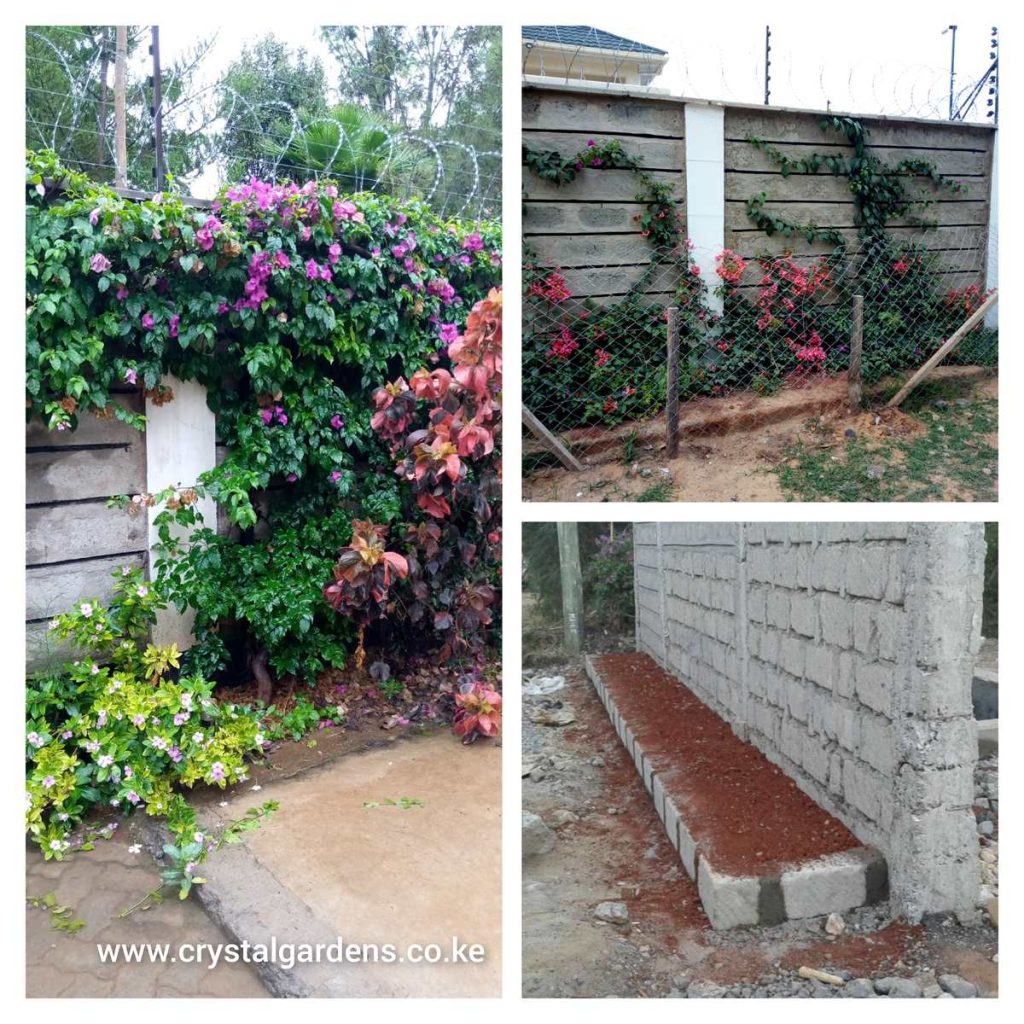
What is vertical gardening?
Vertical gardening the practice of growing plants along structures or walls vertically instead of growing them horizontally on the ground. In areas with small spaces like urban settlements, containers and supports like trellises are used to support plants to grow up-and not spread along the ground. Besides being highly practical, vertical growing is also very aesthetic as creativity is employed to make maximum use of small spaces. Often it is plants with climbing or creeping ability that are used in vertical gardening.
Climbing plants and how to use them in vertical gardening
A tree could take five years or more to reach maturity, but most climbers will cover a wall in two years, or even less if you use fast growing climbers. Where to grow the climbers rests squarely on the design problem you wish to address or the effect you wish to create. Generally most people grow climbers to soften hard surfaces and introduce a touch of greenery to an otherwise bare surface. This is mostly applicable to the perimeter or house wall where the rough and rugged finish needs tempering.
Screens in form of trellises or fences meant to demarcate sections in the garden or screen out unsightly views rarely achieve their purpose unless backed by climbers. Their foliage creates a barrier while the flowers serve to detract from the plainness.
For decoration, climbers come in handy. A profusion of foliage and flowers clambering up pillars or around your window bars will not only give your house a graceful look, but also bring colour to your doorstep. Some vertical gardening plants like Jasmine have the added advantage of emitting delightful scents. In putting up sheds, carports and pergolas one needs to set up the framework as creeper foliage provides shading.
You can also raise climbers that provide fruits like passion or grape vines.
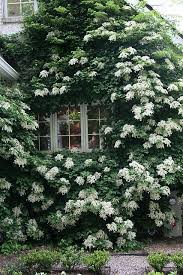
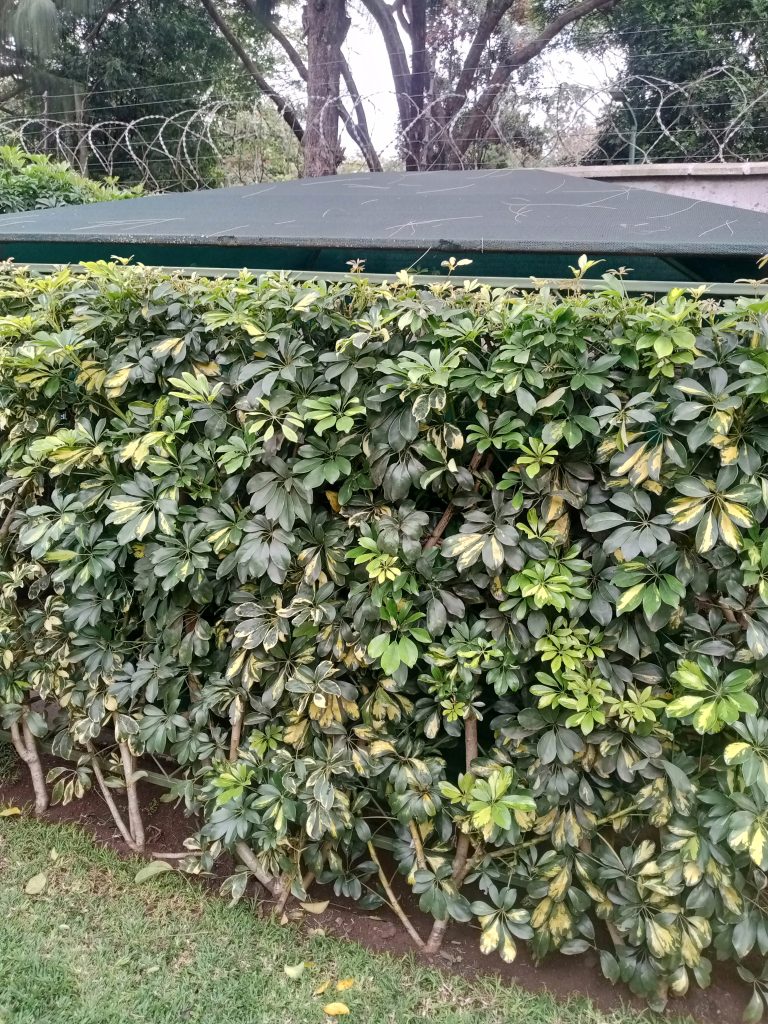
The following plants are the most common climbers used in vertical gardening
- Bougainvillea
- Grapes
- Passion fruit
- Clematis
- Honeysuckle
- Golden shower
- Thurnergia
- Mandevilla
- Ficus pumilla
- Ivies
- Plumbao
- Queen of the night
- Jasmimum
Choosing a climber for vertical gardening
In selecting a climber, knowledge of how it anchors itself against a surface is vital. While some climbers are clingers, others will need to be supported up a wall or pillar surface. Some clinging climbers like honey suckle use the growing tips of stems to grip, while clematis, grapevines and sweet peas use tendrils growing like side shoots. Ivies and ficus have aerial roots for clinging. most climbers prefer rough wall surfaces.
Clinging roses use their thorny stems for hugging surface although they may occasionally need tying up. These clinging types are appropriate for high walls, as they will propel themselves.
Wires, hooks, nails and netting along which the climbers will be guided need to be installed before the planting is done so that the young plants are not treaded upon.
Protect Your Plants
When using pillars or poles, growing climbers need not present difficulties. Never tie them unprotected, as this will cause chaffing whenever there is a strong wind. Similarly, use of a hard metal strips is discouraged as they can cut into the plant stem. Instead, tie a leather strap or soft clothing around the pole and attach the climber to it with a loose note.
Some climbers grow very fast and will colonize a given area in no time. For a small garden, this could be a nightmare and your options could be limited either planting in a container to limit root growth and consequently its upward growth or regular pruning so that it lies flat along the surface.
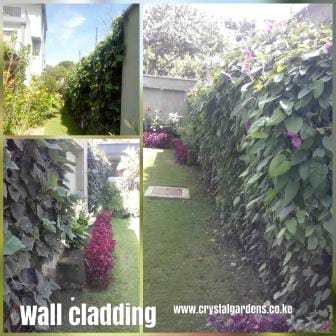
Where To plant
Sometimes all you need is a hole in the ground. I have on numerous occasions simply drilled a circular hole in mortal or paving and planted my vertical plant. Most often though, for vertical gardens get a sizeable pot or a planter which can support the eventual size of the climber. Ensure the soil used is free draining. If your climber is the flowering type, it is recommended to plant it in a sunny spot to encourage abundant blooms.
To get the best out of your climbers, particularly the flowering and fruiting type, ensure that you regularly fertilize them with potassium rich fertilizer.
Watch out for ivy and ficus as the two are known to pull out mortar from the wall, hence weakening the structure. This from my experience though only happens to poorly made mortar.

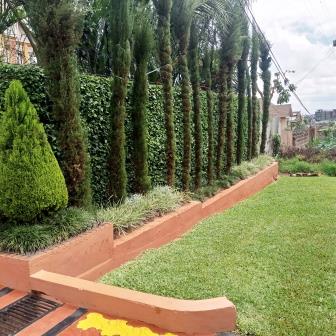
Leave a Reply